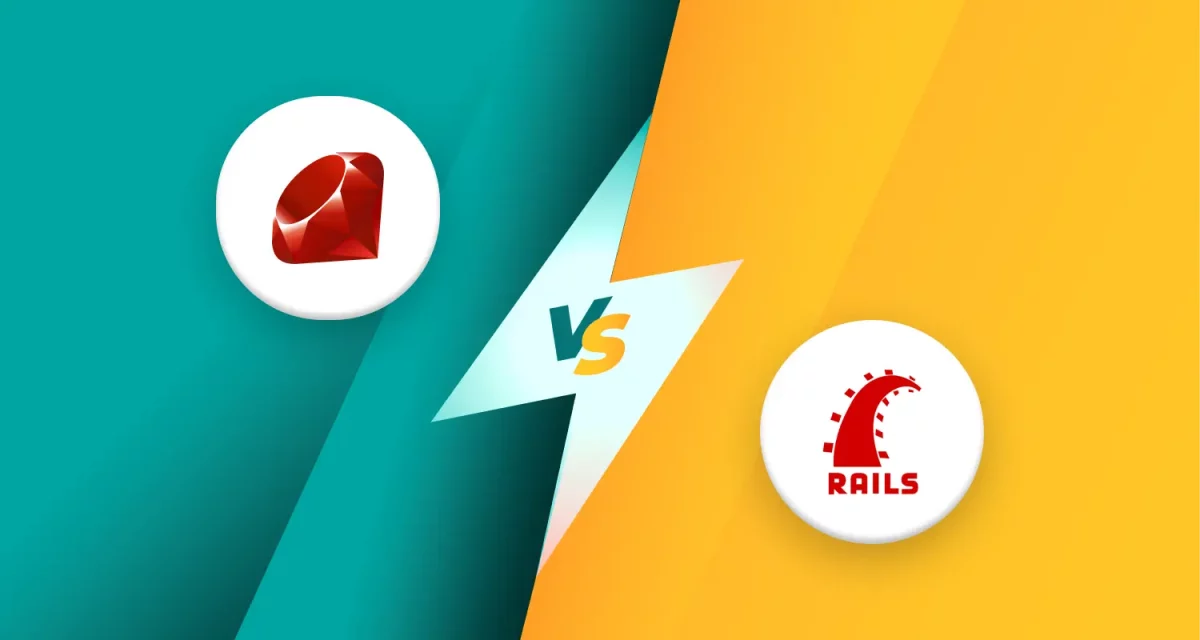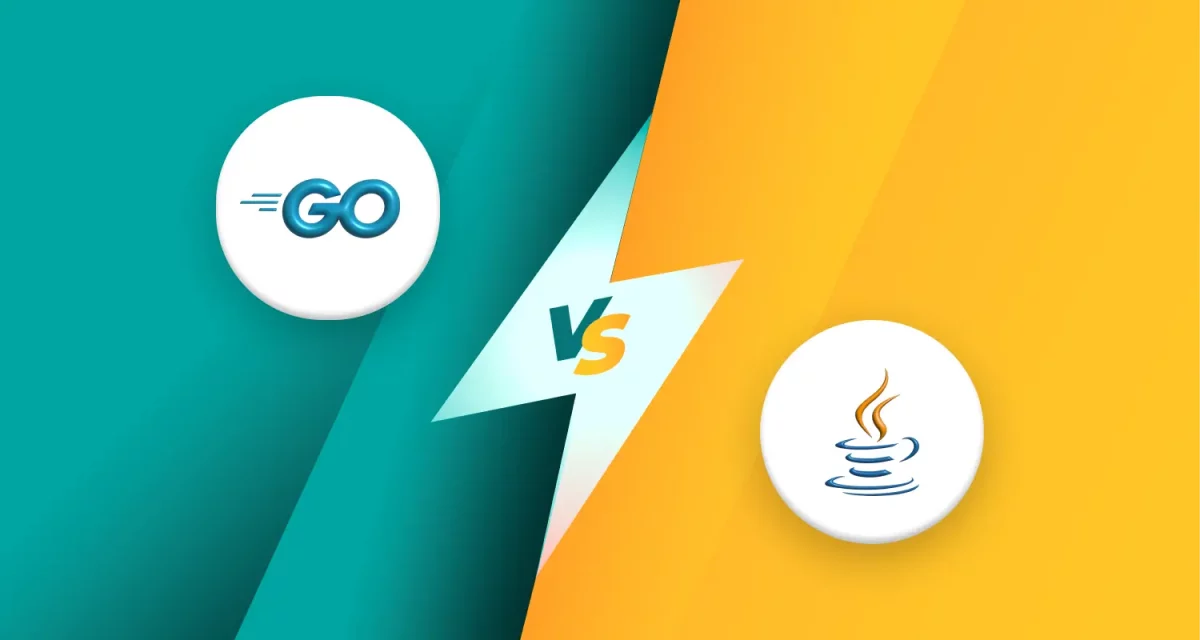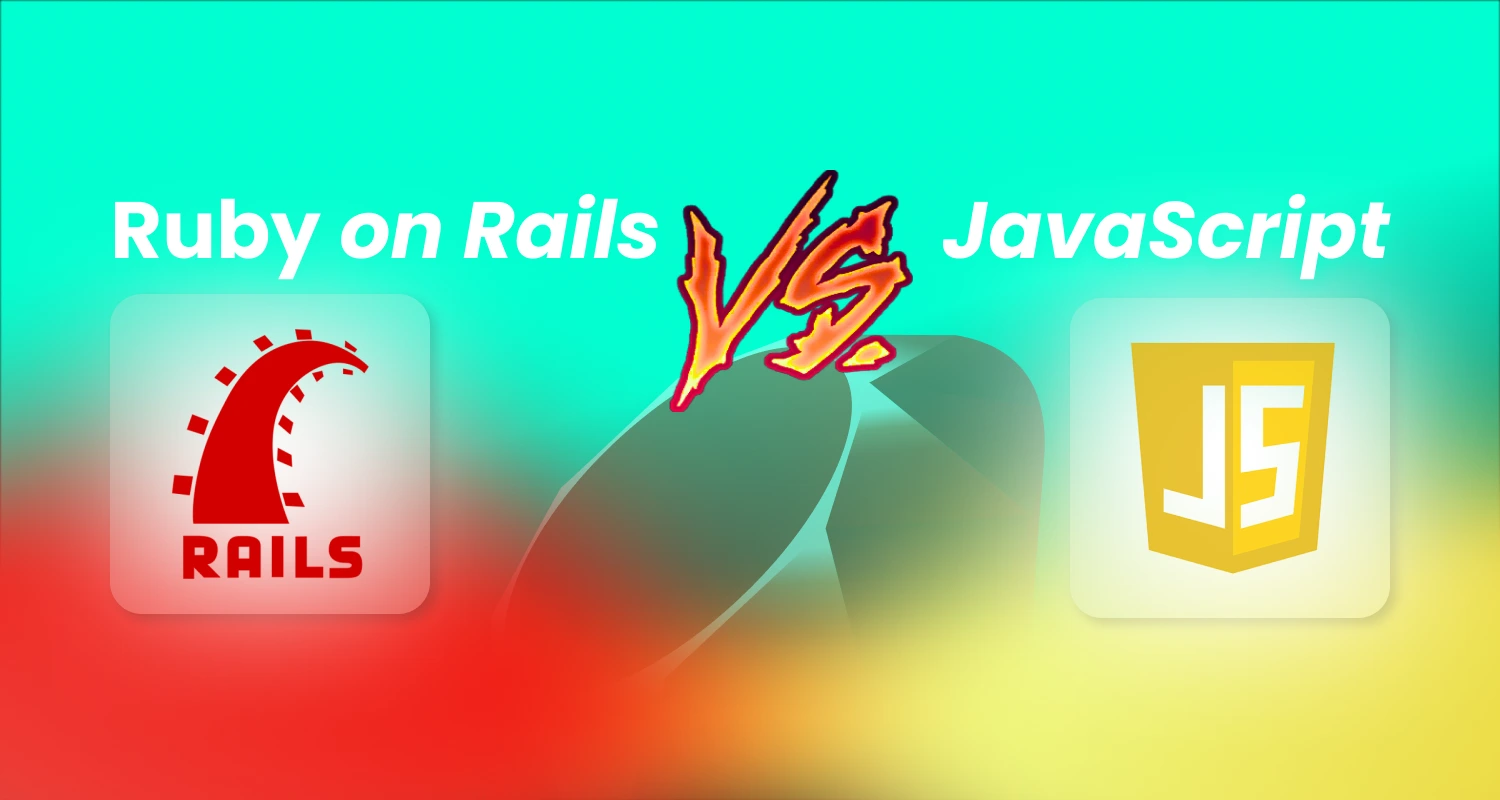
Choosing the right framework for your web development project can be challenging, especially when you’re deciding between Ruby on Rails vs JavaScript. Whether you’re a startup founder or a developer, both frameworks offer unique strengths, but how do you know which one fits your project best?
In this article, we’ll compare Ruby on Rails vs JavaScript in terms of performance, scalability and ease of use.
1. What is Ruby on Rails?
Ruby on Rails, often just called Rails, is a powerful and developer-friendly web framework built on the Ruby programming language. Launched in 2005, Rails is known for its emphasis on convention over configuration and its focus on making web development faster and easier. This means that developers can focus on writing their app’s logic instead of spending time on repetitive setup tasks.
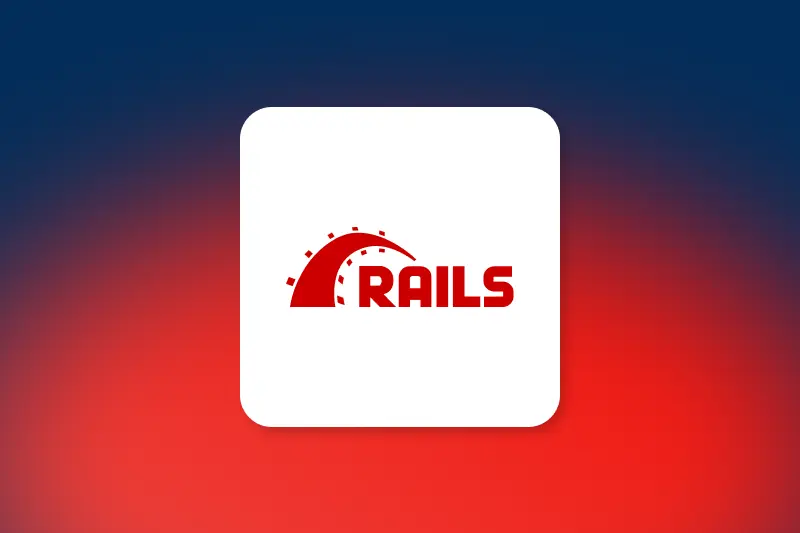
The framework follows a principle called “Convention over Configuration” (CoC), which provides a set of conventions for developers to follow, simplifying the development process. It also adheres to “Don’t Repeat Yourself” (DRY), encouraging developers to write cleaner and more efficient code by reducing redundancy.
Rails is particularly well-known for its ability to help developers rapidly build applications, making it a popular choice for startups and projects that need to go live quickly. It’s a full-stack framework, meaning it provides both backend and front-end solutions, and is widely used for building scalable and maintainable web applications.
Key features of Ruby on Rails:
- MVC architecture: Rails follows the Model-View-Controller (MVC) pattern, which helps keep your application organized by separating the application logic from the user interface.
- Active record: Rails provides an object-relational mapping (ORM) tool that simplifies database interactions, making it easier to manage and manipulate data.
- Build-in testing: Rails comes with a build-in testing framework that encourages developers to write tests and ensures your application is stable and reliable.
- Gems and plugins: Ruby on Rails boasts a rich ecosystem of gems (libraries) and plugins, which can be easily integrated into your project to add new features or streamline common development tasks.
- Security: Rails comes with several built-in security features, such as protection from SQL injection, cross-site scripting (XSS) and cross-site request forgery (CSRF), making it a reliable option for building secure web applications.
Read more >>> Ruby on Rails vs Django: Which Framework Should You Choose?
2. What Is JavaScript?
JavaScript is the programming language of the web. It’s the backbone of interactivity and dynamic content on almost every website you visit. Initially, JavaScript was a client-side language, meaning it ran in the user’s browser to control things like animations, form validation, and other interactive elements. However, over time, JavaScript has evolved to become a full-stack language used for both frontend and backend development.
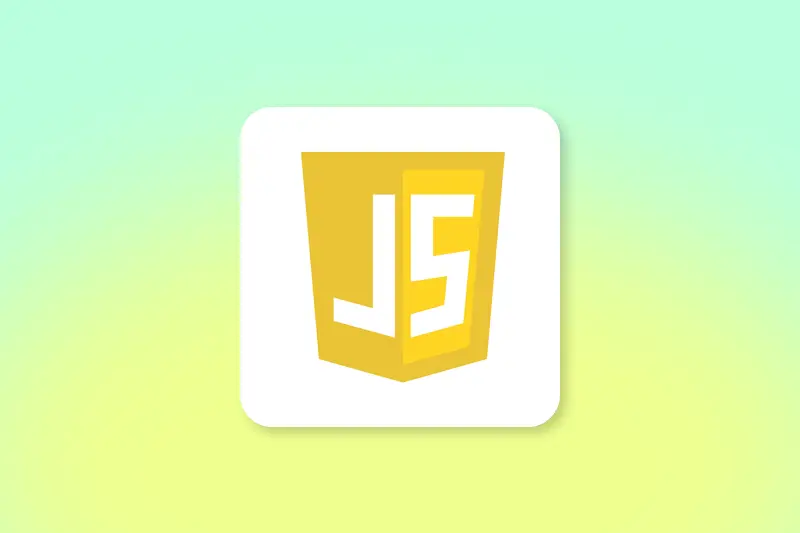
With the advent of technologies like Node.js, JavaScript can now run on the server-side as well, allowing developers to use a single language for both client and server-side code. This makes JavaScript a highly versatile and attractive option for full-stack development.
JavaScript also has a rich ecosystem of libraries and frameworks, including popular tools like React.js, Vue.js, and Angular for building dynamic user interfaces, and Node.js and Express.js for backend development. This versatility has made JavaScript the most widely used programming language in the world, and it powers the majority of web applications today.
Read more >>> TypeScript vs JavaScript – Which Is Better for Your Project?
Key features of JavaScript:
- Asynchronous programming: One of JavaScript’s key features is its ability to handle asynchronous operations, such as reading from a database or making network requests, without blocking the main thread. This is crucial for building fast, non-blocking applications, particularly in real-time systems.
- Event-driven: JavaScript is event-driven, meaning it responds to user interactions, such as clicks and keypresses, in real-time. This allows for dynamic web pages that feel responsive and interactive.
- Single language: With Node.js, JavaScript can be used for both the frontend and backend, making it easier for developers to work across the full stack with a single language.
- Rich ecosystem: The JavaScript ecosystem is vast and constantly evolving. Libraries and frameworks like React.js, Vue.js, and Next.js help developers build complex, modern web applications with ease.
- Cross-platform: JavaScript runs in all major browsers and is also used for mobile app development (e.g., React Native), server-side applications (Node.js), and even desktop applications (e.g., Electron).
Read more >>> Python vs Java: Key Differences, Use Cases, and Which to Choose
3. Differences between Ruby on Rails and JavaScript
Now that we’ve explored what Ruby on Rails vs JavaScript offer individually, it’s time to compare them directly. Each framework shines in different areas, and the right choice will depend on your project’s priorities, team expertise and long-term goals.
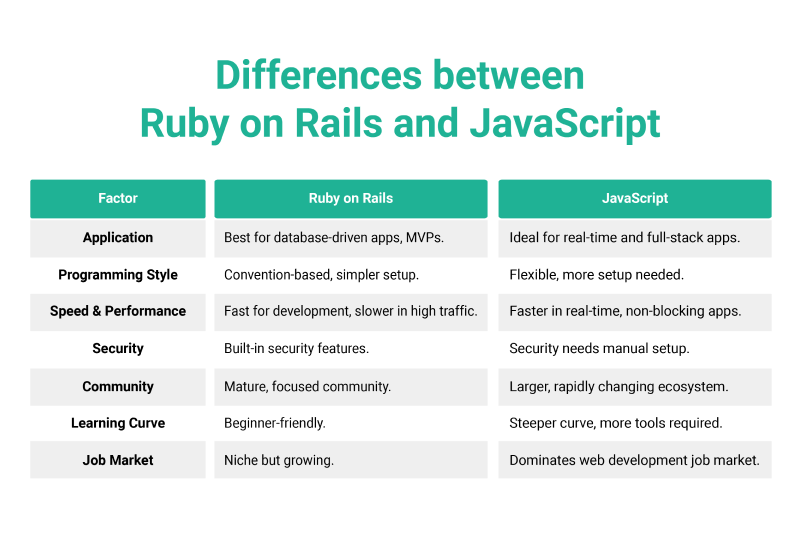
3.1 Application
Ruby on Rails is often used for building database-driven applications quickly, such as content management systems, e-commerce sites and MVPs. It’s great for startups and teams that want a clean, structured foundation to build on.
JavaScript, on the other hand, is used to build everything from real-time apps and interactive web interfaces to full-stack applications using tools like Node.js and React. It’s more flexible in scope but also requires more setup and architectural decisions.
3.2 Programming style
Rails emphasizes convention and simplicity. It abstracts away many of the respective decisions, which means developers can follow established patterns and build faster with less configuration.
JavaScript gives you more control and flexibility. It’s unopinionated, which means you can structure your project however you like, but this also means more responsibility and decision-making on your part.
3.3 Speed and performance
When it comes to performance, JavaScript (especially with Node.js) has the edge for real-time applications due to its non-blocking, event-driven architecture. This makes it ideal for handling multiple simultaneous connections, like in chat apps or live feeds.
Ruby on Rails is fast for development, but its runtime performance can lag behind JavaScript in high-concurrency environments. However, with proper scaling and optimization, it still powers major platforms like Airbnb.
3.4 Security
Rails comes with build-in security mechanisms like protection from SQL injection and CSRF by default. The framework promotes secure coding practices, which is especially helpful for newer developers.
JavaScript also supports secure development, but since it’s used across many environments (browsers, servers, APIs), security needs to be implemented manually and contextually, the responsibility is more on the developer.
3.5 Community and support
Both have strong communities. Ryby on Rails has a mature, tight-knit community with a focus on best practices and rapid development. It offers great documentation and a wide range of helpful gems.
JavaScript has a much larger ecosystem, with new tools and frameworks emerging constantly. You’ll never be short of tutorials, libraries and support, but keeping up with the rapid changes can be a challenge.
Read more >>>> Ruby vs PHP: Which Language is the Best for Web Development?
3.6 Learning curve
Rails is known for its beginner-friendly nature. Thanks to its clear structure and convention-based approach, newcomers can get a functioning app up and running in very little time.
Java script has a steeper learning curve due to its versatility. You’ll likely need to learn several frameworks and tools to achieve the same full-stack capability as Rails out of the box.
3.7 Job market
JavaScript dominates the job market due to its widespread use across all aspects of web development. If you’re aiming for flexibility in job opportunities or freelance work, JavaScript is hard to beat.
4. Conclusion
Choosing between Ruby on Rails and JavaScript ultimately depends on your specific project needs and long-term goals. Both have distinct strengths, and understanding them will help you make an informed decision.
If you’re looking for a framework that promotes rapid development with a clear structure, and you’re focused on building a database-driven application or MVP quickly, Ruby on Rails is an excellent choice. Its strong conventions, built-in features and security features make it ideal for startups and businesses aiming to get to the market fast without sacrificing quality.
On the other hand, if you need flexibility, scalability, and the ability to work across both the frontend and backend, JavaScript (with Node.js and various frontend frameworks like React or Vue.js) may be the better fit. JavaScript’s non-blocking, event-driven nature makes it perfect for real-time applications and high-traffic websites, and its vast ecosystem ensures you have the tools to handle almost any use case.
Ultimately, Ruby on Rails vs JavaScript isn’t about one being better than the other—it’s about choosing the right tool for the job. Consider your team’s expertise, the specific demands of your project, and the scalability you require as you make your decision. Whether you choose Rails for its convention-based development or JavaScript for its flexibility and full-stack capabilities, both frameworks can help you create high-quality web applications when used in the right context.
Looking to take your web development to the next level? Reach out to Stepmedia today and let our expert team help you choose the perfect framework.


